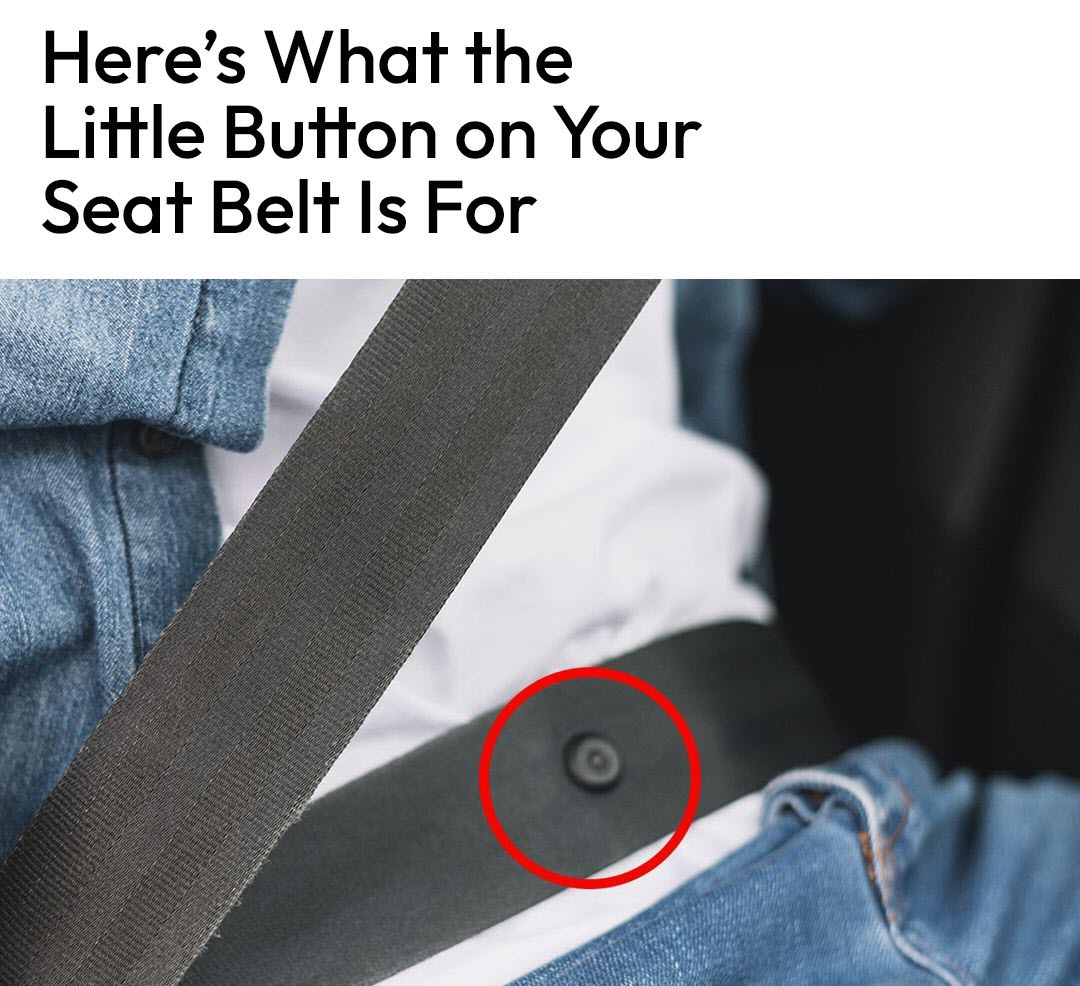When it comes to the small details in our cars, there are plenty of features we overlook. Modern vehicles are packed with smart designs, many of which go unnoticed but serve an essential purpose. One such feature is the tiny button on the seatbelt strap. You might have spotted it before and wondered what it does. Believe it or not, this little button plays a crucial role in your car’s seatbelt system.

What Is the Seatbelt Stop Button?
This small but mighty feature, commonly called a stop button or retainer button, keeps the latch plate—the metal piece that clicks into the buckle—securely in place on the strap. Without it, the latch plate would slide all the way down to the bottom of the belt every time you unbuckle, making it a hassle to find and use your seatbelt.
Now, imagine having to fish for the latch plate near the floor of your car every time you wanted to buckle up. Annoying, right? That’s exactly the problem the stop button prevents. By holding the latch plate in a convenient position, it makes fastening your seatbelt quick and effortless.
The Secondary Stop Button’s Purpose
In some cars, you might notice a second stop button further up on the seatbelt strap. This additional button prevents the latch plate from sliding too far upward, ensuring it stays within an easily accessible range. While the belt still allows some movement, this second button ensures the latch plate doesn’t move out of reach, making it easier to grab when you need it.
This seemingly simple feature takes into account drivers of all heights and seating positions, ensuring the seatbelt is always within reach and ready to use. It’s a small touch that makes a big difference in everyday convenience.
What Happens If the Stop Button Breaks?
Like any car component, stop buttons can wear out over time. Repeated use, accidental damage, or just normal wear and tear can cause them to break or come loose. If this happens, you might start experiencing the very inconvenience the stop button was designed to prevent—your latch plate sliding too far down or getting stuck in an awkward position.
The good news? Replacing a broken stop button is incredibly easy and inexpensive. You can find replacement buttons online or at an auto parts store, usually sold in simple kits that come with everything you need. Even if you’re not particularly handy, installing a new stop button takes just a few minutes and requires only minimal tools, such as a small screwdriver.
How to Prevent Stop Button Wear and Tear
To avoid dealing with a broken stop button, a little bit of care goes a long way. Here are some tips to extend its lifespan:
- Avoid pulling or tugging on the button when adjusting your seatbelt.
- Regularly check your seatbelt for signs of wear, including fraying or weakening around the stop button.
- If you notice the button becoming loose, consider reinforcing it before it fully breaks.
Taking these simple steps can help ensure that your seatbelt remains in top condition for years to come.
A Tiny Yet Essential Feature
It’s fascinating how such a small, often-overlooked feature can have such a major impact on convenience and functionality. The stop button is a perfect example of the thoughtful engineering that goes into modern cars—where even the tiniest details are designed to make driving safer and more comfortable.
Next time you buckle up, take a second to appreciate this tiny but essential part of your seatbelt. And if it ever breaks, you now know exactly how to fix it. It’s just another reminder that in car design, nothing is there by accident—everything serves a purpose.





